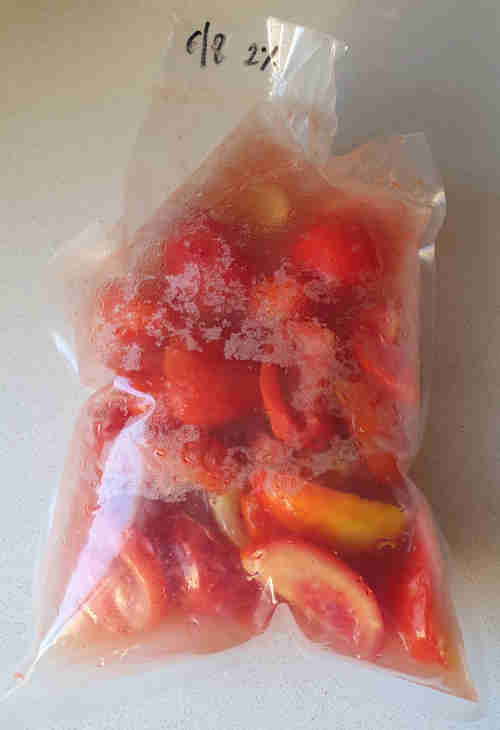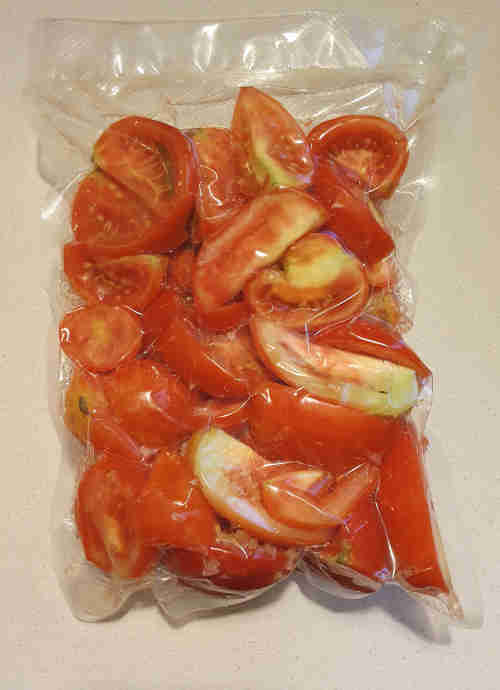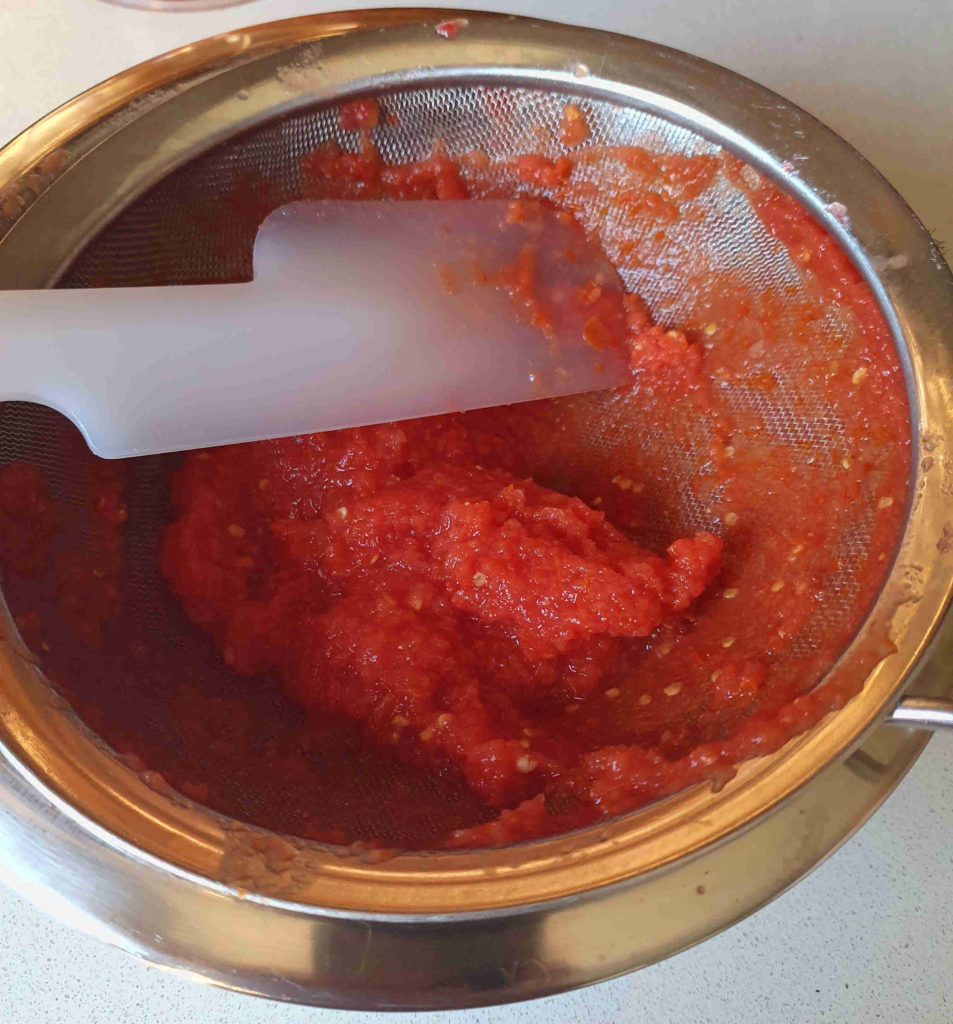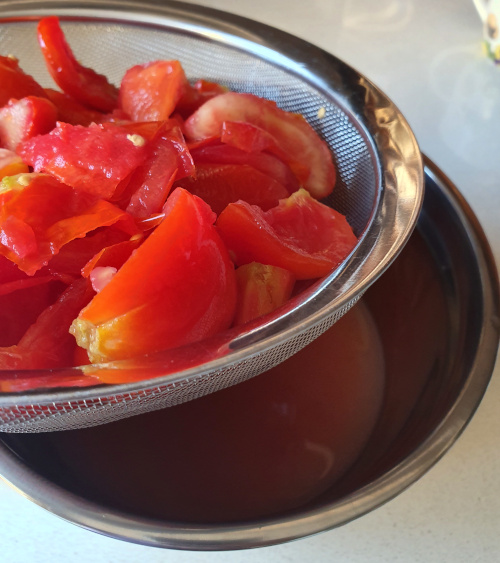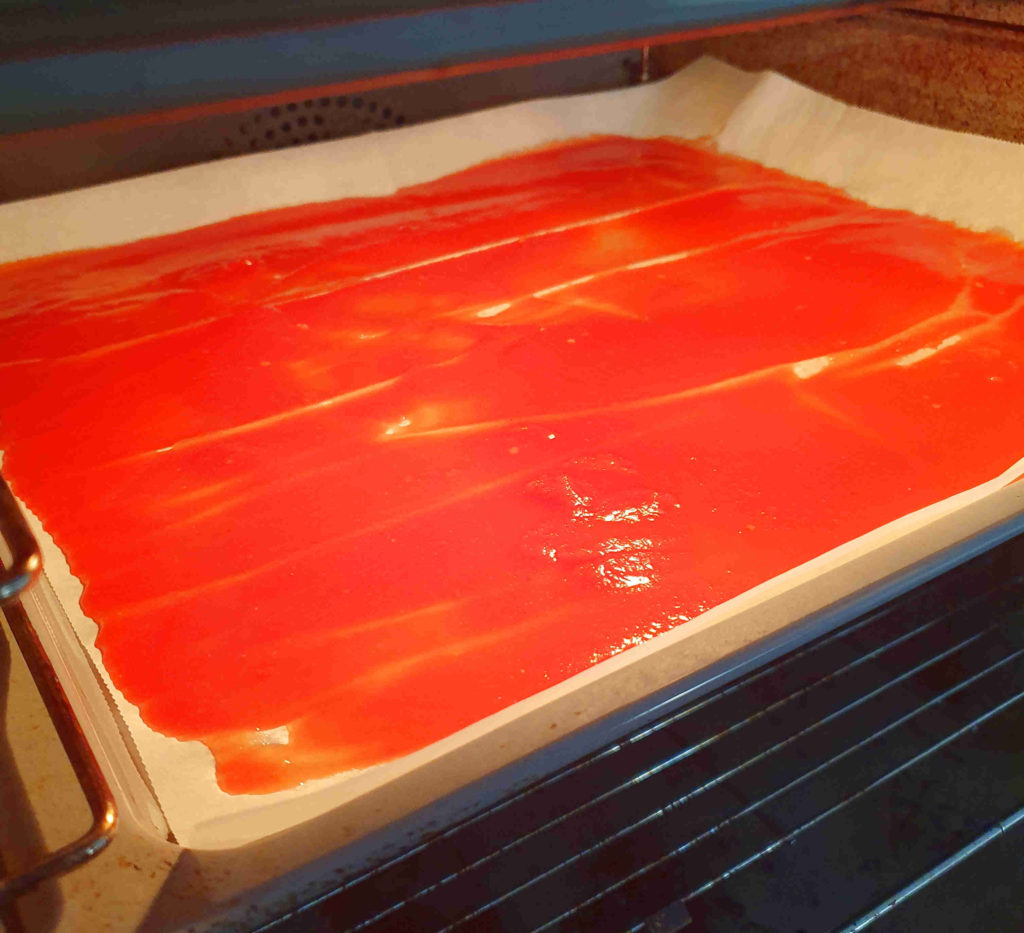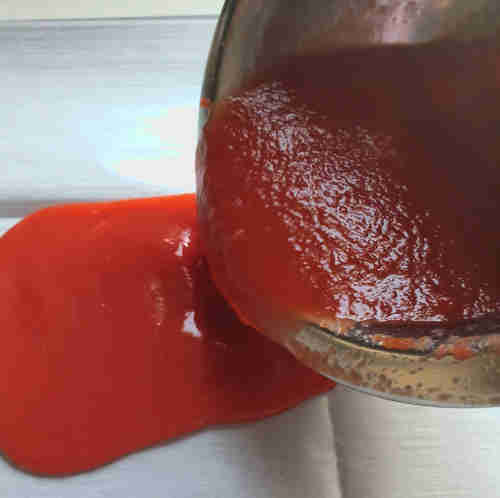I really like tomatoes, and I especially like them at the peak of their season. Tomatoes at the peak of their season are red, sweet and bursting with flavor. In order to “celebrate” the peak of the season, I decided to make an interesting recipe Lacto fermented tomatoes leather, that I saw in Numa’s book.
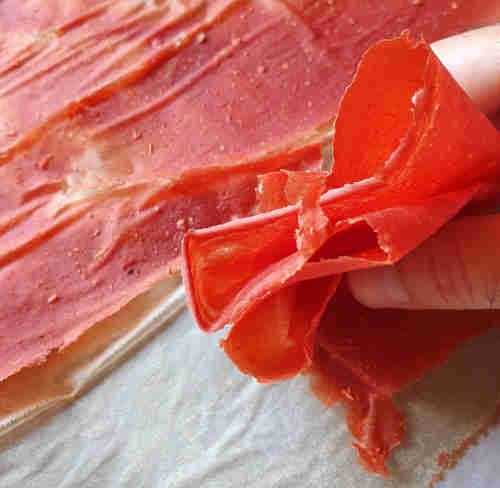
At this time of the year, I look for many types of tomatoes to “play” with. Tomatillos, Cherry tomatoes, Green tomatoes and of course San Marzano tomatoes are a nice variety of products that you can do interesting things with. See the recipe of a very nice traditional Italian Fermented tomatoes – ‘Conserva Cruda di Pomodoro’,
One of the benefits of the unbearable heat of late August is the excellent tomatoes. The hot season has many culinary advantages and one of the most prominent is red sweet tomatoes.
Despite the sweetness of the tomatoes, they have a slight sourness. So when we are fermenting tomatoes we do not want to over-emphasize the tomatoes sourness, but merely preserve them and create a balance between the sweetness and sourness of the tomatoes.
What’s interesting i the process of tomato fermenting is that after the tomato fermentation process is over the tomatoes taste as if it’s cooked.
This fermentation has a number of Byproducts: Lacto fermented tomato water, Lacto fermented tomato sauce or what I’m going to make here, Lacto fermented
In a previous post, I did a similar process with fermented plums, and also there were a number of other Byproducts in the process.
Making tomato leather
Making tomato leather was a new tomato preservation method that I tried. The texture of the Lacto fermented tomato leather is a bit different, it is like beef jerky paper-thin, neither crisp nor soft. They’re very fun to eat, as they tear, and feel like tasty paper wafers.
In order to make the Lacto fermented tomato leather, you need a food dehydrator or alternatively use a good oven at 50 degrees. I have a good Miele oven that can be set to fifty degrees centigrade.
As a fermentation vessel, I used a vacuum bag sealed with a vacuum machine. The use of a vacuum bag makes it possible to do the fermentation without the need for liquids, so we can get the fermentation liquid that is not diluted with water. If we were to do the “normal” fermentation process in a jar, we would have to add water to cover the tomatoes and we would not be able to get the same special fermentation liquid we get with the vacuum bag method.
I guess you’re wondering what can be done with tomato leather?
Tomato leather has a
Ingredients
- 1 kg tomatoes
- 20 g salt
Instructions
- Wash the tomatoes with water and remove any surface debris. Do not over-rub the tomatoes not to remove too much of the surface bacteria.
- Cut the tomatoes in half.
- Weight the halved tomatoes and add 2% salt. For instance, for 1kg of tomatoes, you should add 20g of salt.
- Toss the tomatoes to cover evenly with salt.
- Place the tomatoes inside a vacuum-seal bag, and vacuum seal the bag.
- Let the tomatoes ferment for 5 days, depending on the temperature.
- After a few days, the bag will swell-up. “Burp” the bag by cutting a little hole in the corner to releasing the gas. At this stage, you can start tasting the tomatoes. When done releasing the gas and tasting you should reseal the bag.
- Once the tomatoes are ready to use, cut the bag open and strain the liquid into boul. I would recommend keeping the liquid for various uses.
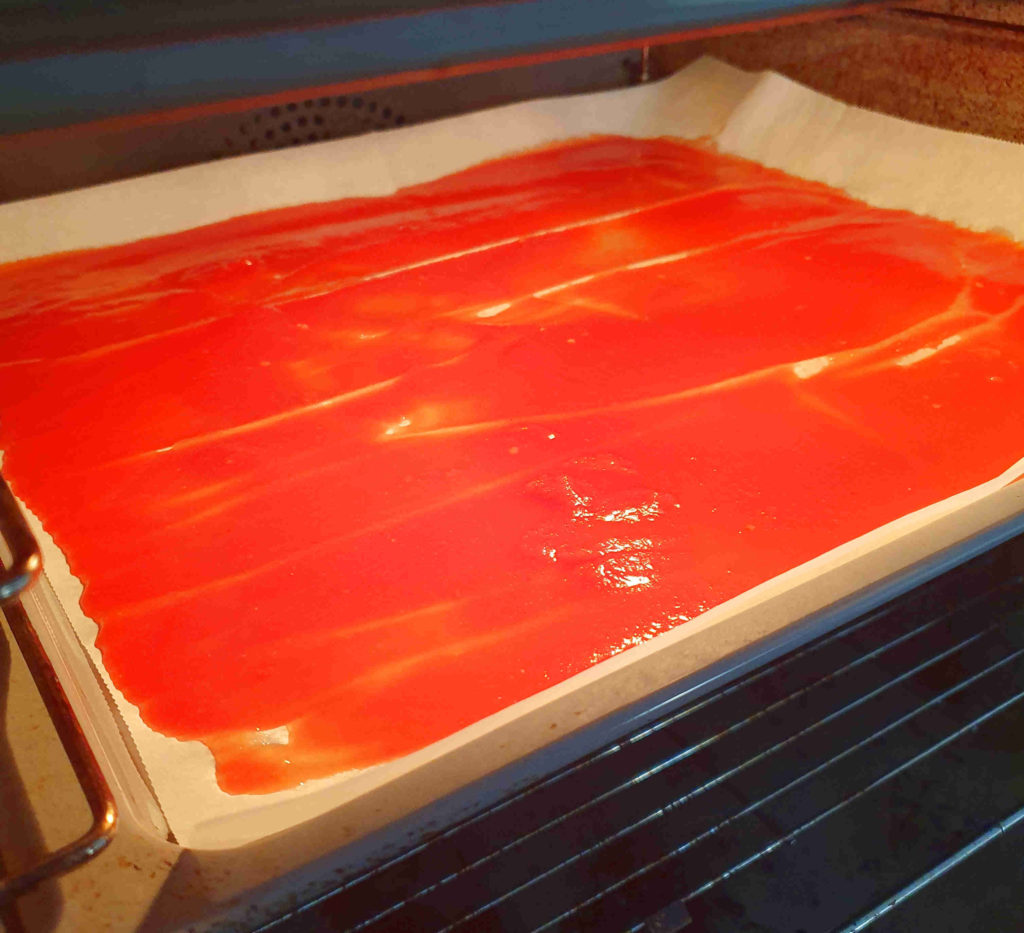
The dehydrating stage
1. Grind the strained tomatoes with a food processor into a smooth texture.
2. Pour the processed tomatoes into a strainer, and with a wooden spoon or with a spatula, push the tomatoes through the strainer to dissolve the tomato peels and seeds and leave you with smooth tomato sauce.
3. Transfer the tomato sauce to a food dehydrator tray or baking tray with baking paper.
4. Spread the sauce to a thin layer on the tray and place in the oven at 50 degrees Celsius until the
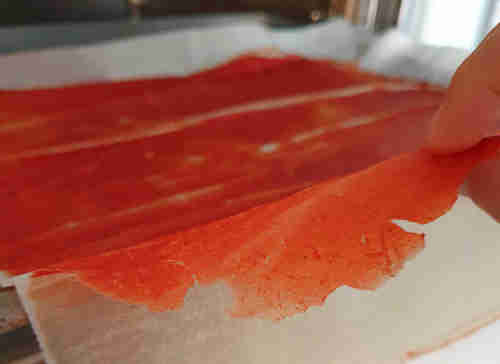
5. Wait until cool before trying to peel off tomato leather.
This site is a participant in the Amazon Services LLC Associates Program and contains affiliate links to products. We may receive a commission for purchases made through these links.
